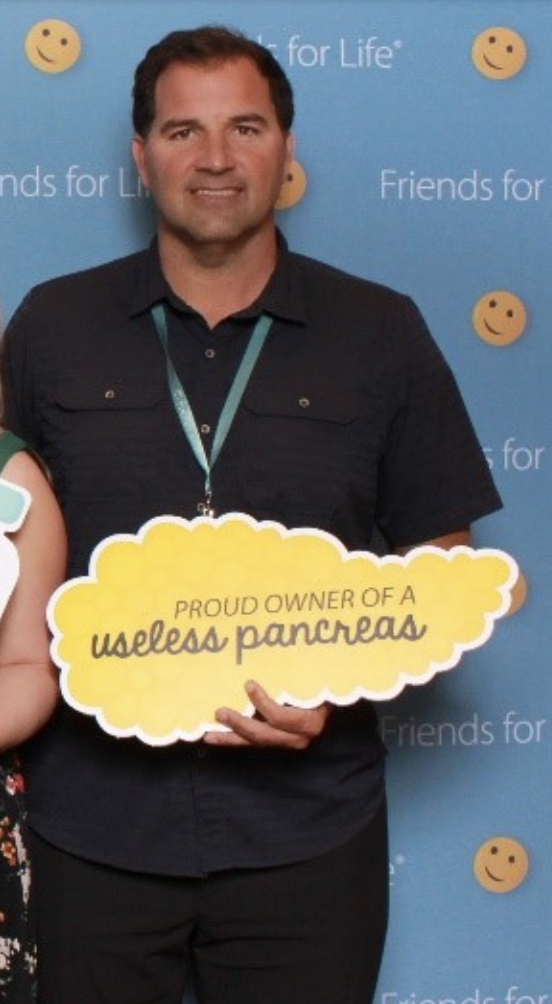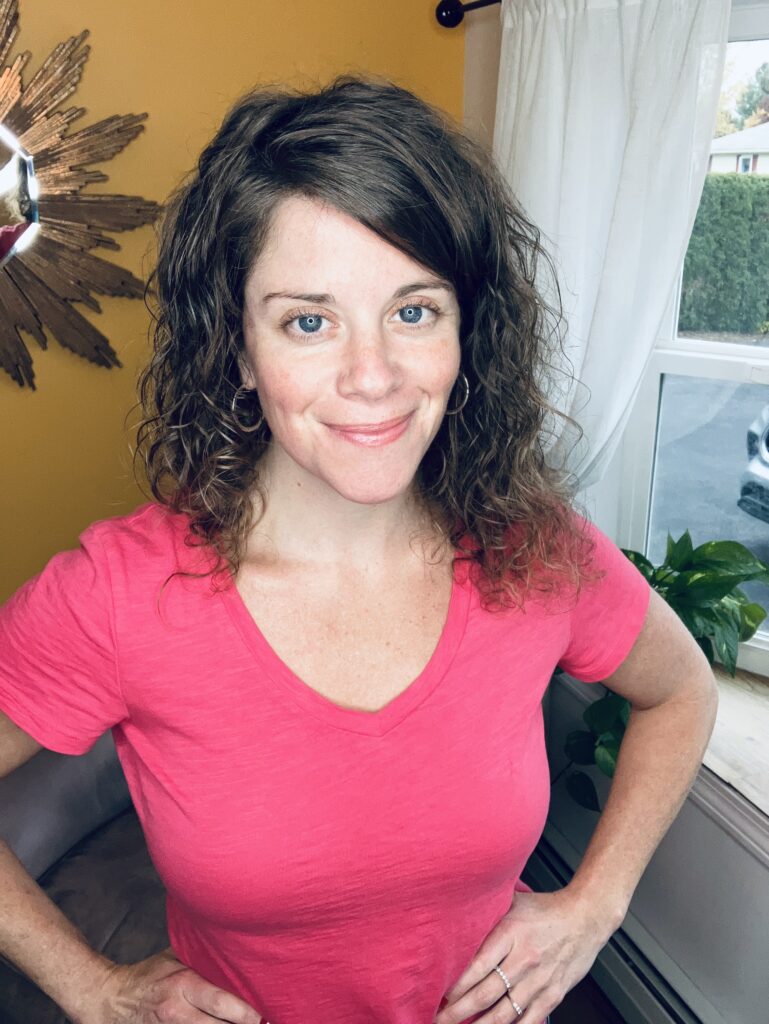
Sign up for a new account.
And get access to
The latest T1D content
Research that matters
Our daily questions
Sign up by entering your info below.
Reset Your Password
Don't worry.
We will email you instructions to reset your
password.
Living with type 1 diabetes (T1D) involves so much more work than managing your blood sugar. We’re not even referring to the non-stop insulin adjustments, the endless attention to everything you eat, the exhausting high blood sugars, the scary low blood sugars, or the mountain-high cost of diabetes supplies and insulin.
There’s also the constant work of simply navigating the healthcare system, the work of actually getting the stuff you need to stay alive, and the hours you’ve spent on the phone finding doctors and scheduling appointments. Oh, what about the parents of children with T1D? The hours spent educating a child’s school? Fighting for their rights to take insulin. Talking to the soccer coach. Missing school for appointments.
No aspect of T1D is easy. This National Diabetes Awareness Month, we want you to know: we get it. Many of us are in the same shoes, fighting the same battles, and enduring the same workload.
Here’s how a few of our team members feel lately about the work of being a patient with T1D.
David Walton
- CEO & President of T1D Exchange
- 28 years with T1D
- Manages with insulin pump and CGM
 “I started taking a GLP-1 earlier this year per my endocrinologist’s suggestion given morning post-prandial spikes and having a BMI above 30. Just recently, I wanted to increase the dose of my GLP-1.
“I started taking a GLP-1 earlier this year per my endocrinologist’s suggestion given morning post-prandial spikes and having a BMI above 30. Just recently, I wanted to increase the dose of my GLP-1.
My insurance is very good about covering my automated insulin delivery system and this GLP-1 medication. After seeing some success on my initial dose, I called my endo to increase the dose per the very specific label instructions that spell out how often and by how much to increase the dose.
My endo, who insists on cash pay visits (he doesn’t accept my very good, leading PPO insurance), refused to increase the dose unless I came in person and paid for a cash visit ($115) each time I needed to increase the dose. So, I used a physician who would call it in, and then I fired my endocrinologist. I very safely and successfully increased the dose several times to the max dose and now have the best A1C, time in range, and cholesterol I’ve had in 27 years as a T1D.”
Holly Hardison
- Quality Improvement Coordinator
- 22 years with T1D
- Manages with insulin pump and CGM

“They say that time is money. If I were to count all the time I have invested in checking my sugars, changing my pump and CGM sites, and what feels like days on the phone with insurance and pharmacy, I would have enough to retire and buy my own island.
And those are just the basics of managing T1D.
When you account for all the other appointments, follow-ups, time buying snacks for lows, or mental energy it takes to bring down high blood sugars, you would think I work 80-hour work weeks.
The reality of living with T1D is often overlooked. Even for us living with it, we often forget just how much extra time and energy we invest into making sure we are keeping ourselves alive. Living with diabetes is not easy by any means. If our loved ones, care teams, friends, family, and everyone could experience it for even five minutes, I truly believe that they would understand and give us a break when we snap at them when our sugars are low.”
Samantha Walsh
- Community & Partner Manager
- 6 years with T1D
- Manages with insulin pump and CGM
 “’You have diabetes? You don’t look like you have diabetes? You’re too young to have diabetes?’ As someone who was diagnosed at 21 years old, this is a phrase I hear quite often from the people around me. Is it ignorance? Maybe! But I think it’s the lack of education and awareness that society has inflicted on people. To me the biggest part of being a T1D patient (besides the endless hours of mind work, the highs, the lows and don’t even get me started on the COST of T1D), is bringing awareness to the autoimmune disease and helping to fight for the people who simply can’t.
“’You have diabetes? You don’t look like you have diabetes? You’re too young to have diabetes?’ As someone who was diagnosed at 21 years old, this is a phrase I hear quite often from the people around me. Is it ignorance? Maybe! But I think it’s the lack of education and awareness that society has inflicted on people. To me the biggest part of being a T1D patient (besides the endless hours of mind work, the highs, the lows and don’t even get me started on the COST of T1D), is bringing awareness to the autoimmune disease and helping to fight for the people who simply can’t.
Sure, being a patient living with T1D requires 24/7 hard work, but for me it’s worth it to try and bring awareness and educate as many people as possible. Not everyone has access to the type of platform that I do, since I work in the industry.
Since I do work in the industry, I try to take advantage of the opportunities that come my way. I am able to be creative every day to help share the highs and lows of diabetes. I choose to read, educate, learn, and ask questions to accurately influence the people who aren’t as close to the diabetes world. So, yeah, the work of a T1D patient is relentless, exhausting, and hard, but at the same time, it allows me to show my strength, resilience, and determination, which makes it all worthwhile. T1D has made me stronger than I would ever have imagined.”
Ginger Vieira
- Associate Director of Communications
- 25 years with T1D + fibromyalgia, celiac, POTS, hypothyroidism
- Manages with inhaled insulin, rapid-acting insulin, long-acting insulin & CGM
 “Getting all the stuff that keeps me alive with T1D feels very time-consuming. It also consumes so much mental energy. I wish I could pick up all my medications and supplies in the same place at the same time — holy moly, that would save me so much time. Instead, the prescription for rapid-acting insulin is ready this week, thyroid meds a week later, CGM sensors a few weeks later, and long-acting insulin a week later.
“Getting all the stuff that keeps me alive with T1D feels very time-consuming. It also consumes so much mental energy. I wish I could pick up all my medications and supplies in the same place at the same time — holy moly, that would save me so much time. Instead, the prescription for rapid-acting insulin is ready this week, thyroid meds a week later, CGM sensors a few weeks later, and long-acting insulin a week later.
My inhaled insulin gets shipped right to my door — which is convenient — but it always requires a phone call to confirm before they send it. I also love that these prescriptions all eventually expire — because health insurance thinks I might’ve been cured, I guess — which adds one more step to getting all these medications.
Oh, don’t forget about the annual eye exam, which takes time to schedule but also consumes a whole afternoon when dilated eyes mean you can’t look at a computer screen or be outside comfortably. (I’ve been trying for a month to book this year’s appointment, but no one is answering the phone, and everyone who takes my insurance seems to be booked up for months.) Making appointments with the phlebotomy lab takes forever because they’re understaffed. And that’s just the routine stuff. Don’t even get me started on insurance approvals when you dare to try something new. Alright, that’s the end of my rant. For now.”
We value your experience with T1D: participate in T1D research from home by joining the T1D Exchange Registry!
Samantha Walsh
Related Stories
1 Comment
The Work of Living with Type 1 Diabetes Cancel reply
You must be logged in to post a comment.








Coming up on my 70th year with my friend and yours, diabetes! Sometimes I have to be reminded how much work it really is, because I only had 14 years without it, and it really is my “normal.” Given a choice, of course I’d opt out, but there probably have been some benefits. Maybe eating a reasonably healthy diet? Getting plenty of exercise? I do have to be grateful for those payoffs.
But wouldn’t a different health care system, that emphasizes those things, work better? Not to mention a cure? I’ve given up hope for that, realizing that even if one came about tomorrow, I’d probably not qualify due to old age. I’d be fine just knowing that younger people could qualify. How many times does one have to wait 70 years for a promise to be kept? I’m trying really hard to live with something so demanding, all the while being mostly able to count my blessings that I “only have diabetes” to contend with. All of life’s trials and tribulations do come on top of the never ending blood glucose management.
There! Now I’ve had my rant, and will get back to enjoying a life mostly “well” lived.
Onward and upward! (Well, maybe not literally :*}.)